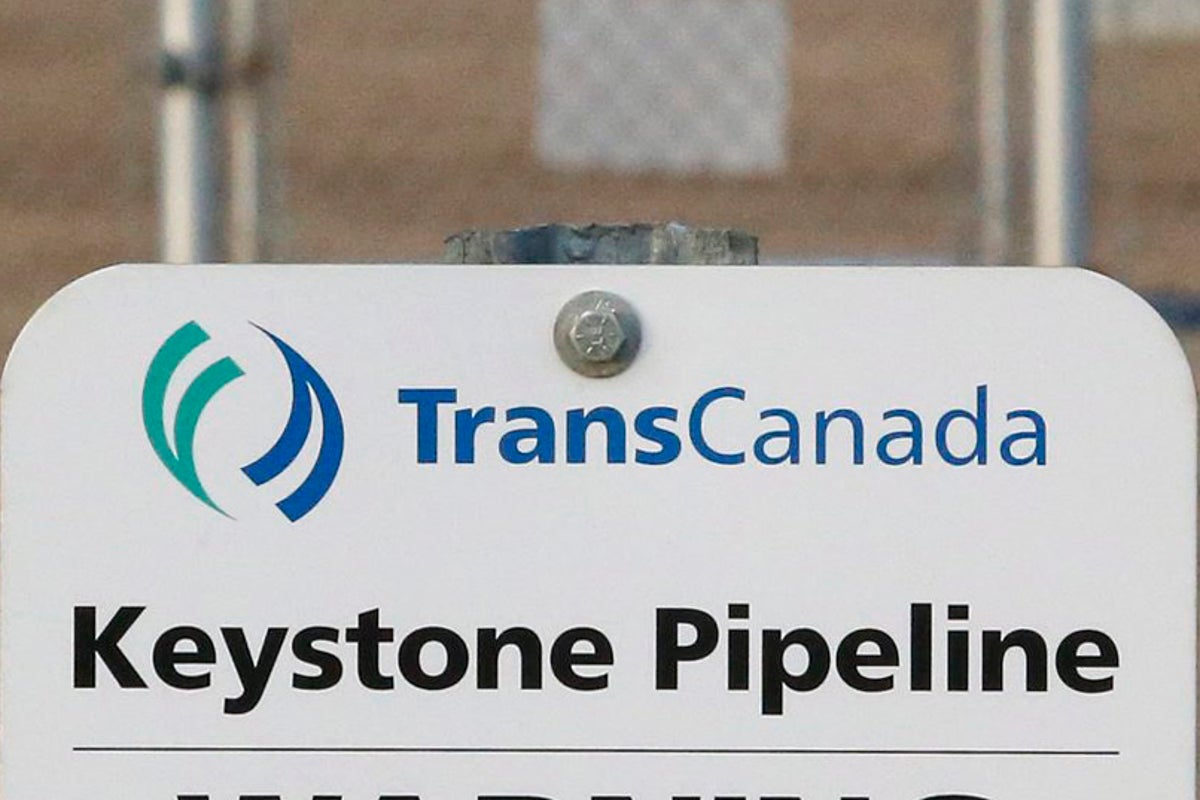
The nearly 2,700-mile Keystone oil pipeline was shut down Tuesday morning after it ruptured in North Dakota, halting the flow of thousands of gallons of crude oil from Canada to refineries in the U.S.
South Bow, a liquid pipeline business that manages the pipeline, said it shut down the pipeline after control center leak detection systems detected a pressure drop in the system. The spill is confined to an agricultural field in a rural area, about 60 miles southwest of Fargo.
“The affected segment has been isolated, and operations and containment resources have been mobilized to site,” the company said. “Our primary focus right now is the safety of onsite personnel and mitigating risk to the environment.”
The pipeline transported an average 624,000 barrels per day in 2024, according to Canadian regulators. It stretches 2689 miles (4327 kilometers) from Albert, Canada, to Texas.
It wasn't clear what caused the rupture of the underground pipeline or the amount of crude oil released into the field. An employee working at the site near Fort Ransom heard a “mechanical bang” and shut down the pipeline within about two minutes, said Bill Suess, spill investigation program manager with the North Dakota Department of Environmental Quality.
Oil surfaced about 300 yards (274 meters) south of the pump station in a field and emergency personnel responded, Suess said.
No people or structures were affected by the spill, he said. A nearby stream that only flows during part of the year was not affected but was blocked off and isolated as a precaution, he said. The Pipelines and Hazardous Materials Safety Administration is sending a team to investigate the cause of the leak.
Fort Ransom is in a hilly, forested area of southeastern North Dakota known for scenic views.
It's unclear at what rate the 30-inch (0.8-meter) pipeline was flowing, but even at two minutes “it's going to have a fairly good volume,” Suess said. “But ... we've had much, much bigger spills,” including one involving the same pipeline a few years ago in Walsh County, North Dakota, he said.
“I don't think it's going to be that huge,” Suess said.
The Keystone Pipeline was constructed in 2010 at a cost of $5.2 billion and carries crude oil across Saskatchewan and Manitoba through North Dakota, South Dakota, Nebraska, Kansas and Missouri to refineries in Illinois, Oklahoma and Texas. Though the pipeline was constructed by TC Energy, it is now managed by South Bow as of 2024.
A proposed extension to the pipeline called Keystone XL would have transported crude oil to refineries on the Gulf Coast, but it was ultimately abandoned by the company in 2021 after years of protests from environmental activists and Indigenous communities over environmental concerns.
In December 2022, nearly 13,000 barrels of oil spilled from Keystone's line in Kansas into a creek traversing a pasture. An engineering consulting firm said the bend in the pipeline at the site had been “overstressed” since being installed in 2010, likely because of construction activity altering the land around the pipe. TC Energy said a faulty weld in the line's bend caused a crack that exacerbated over time.
___
Raza reported from Sioux Falls, South Dakota. Associated Press writer Josh Funk contributed from Omaha, Nebraska.
Wayne Gretzky says he has 'no political power' over the president or prime minister
After decades of sex abuse complaints, a NY pediatrician is ordered to pay $1.6B to over 100 women
A new Idaho law ends publicly funded vaccinations for immigrants in the US illegally
Judge rejects new trials for 2 convicted of human smuggling in death of family of 4 from India
MLB star Octavio Dotel feared among the dead in Dominican club roof collapse: reports
Immigration judge to rule Friday on possible release of detained Columbia activist Mahmoud Khalil







